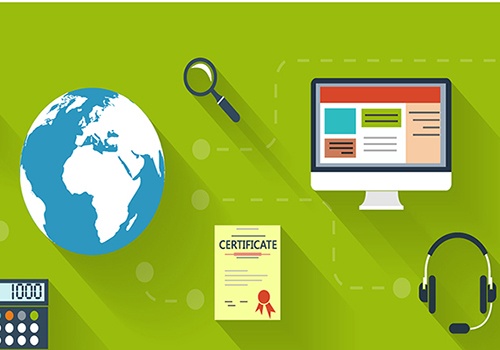eLearning And The Modern Education System
With online education courses fast mushrooming across the internet, more and more children and adults looking for skills advancement are turning to eLearning. It is also interesting to note that the major academic institutions of the world including the Harvard, Massachusetts Institute of Technology, Yale, and Stanford to name a few are now offering students the option of getting an education by signing up for online courses and earning the necessary credits. These courses are available free of cost or for a charge.
This factor holds true especially in the case of students in underdeveloped and third-world countries who can use the education to further their prospects of getting good jobs and living better lives.
In this scenario, it remains to be seen if conventional education programs and institutions will continue to prevail in the modern world. Given a choice among eLearning, traditional training provided by expert instructors, and a blend of 2 systems, what will students prefer? Let’s explore the options and find out.
Understanding Traditional Instructor-Led Training (ILT)
The traditional Instructor-Led Training (ILT) system of imparting education has been followed for centuries. Professional experts in their respective fields relay new skills and information in a classroom setting that is held at a particular location and according to a set schedule. ILT can be of various forms.
- Lectures given to a large group of students in a university room
- Programs conducted in workshops where there may be fewer learners, but the atmosphere is more interactive with students participating in discussions in real time, and instructors acting as moderators to encourage progressive thinking
- Workshops and training sessions held by companies and businesses to encourage their employees to further their skills for higher positions within the organization
Why Instructor-Led Training Is Beneficial
Is ILT more advantageous over eLearning? As against eLearning, ILT is more customizable according to the needs of the learners. Whereas eLearning courses are formulated according to a set pattern and delivered to all the learners, ILT has a more derivative approach. With their superior knowledge, instructors can adapt the course material according to the skill sets and comprehension levels of the students.
An average classroom will have teachers explaining complicated concepts in detail, responding to queries, and elaborating on the course material with additional tools where needed. Above all, instructors can ensure that students are clear on the lessons they’re learning. Depending on how well learners are picking up concepts and ideas and their interest levels, instructors can design the pace of the lessons.
Perhaps, the most important facet of ILT is that it takes into account the fact that not all students have the same aptitudes and mental capabilities. Some learners may need additional attention, tools, and assistance with their efforts and that’s something only a teacher in real time can provide.
Understanding Blended Learning
Interestingly, the concept of blended learning is not a new one and actually goes back to the 1960s when the PLATO system was first initialized by the University of Illinois and Control Data. At the time, the term used to describe it was "technology-based learning." Students were provided with minicomputers and connected to mainframes in an attempt to eliminate ILT. A wide range of coursework was made available to the learners that included elementary lessons and the more advanced college learning materials. This technology-based training was not without its downsides. For this reason, by the next decade, the system evolved to live video courses broadcast by satellite connections.
Modern-day blended learning aims at providing a better educational experience to the average student. This system of education incorporates online tools with various traditional teaching methods so students can learn more efficiently. Educational institutions across the world including schools, colleges, and universities as well as corporate giants are now adopting the blended learning approach.
An average classroom will have an instructor relaying information in real time to students that are also using laptops, computers, and other digital media with internet access. Similar to traditional ILT, classrooms held in a fixed location according to a specific schedule, and the teacher dictates the pace of the coursework.
Why Blended Learning Is Beneficial
Blended learning allows students to be in charge of their education by developing an in-depth comprehension of the concepts. They can practice what they learn and also have an instructor present to explain the more difficult facets and applications of the coursework.
On their part, instructors have more free time to devote to each student who may need additional assistance. And, this can be made possible when they are not focused on a larger group as with ILT. Teachers can choose to work with a smaller batch of learners organizing classes every week or daily depending on the online coursework they’re working with. Research conducted on blended learning has shown that students progressed much faster and picked up information more readily with online tools.
Here are some other interesting positives about blended learning:
- Smaller classrooms make them easier to manage by the instructors.
- Students respond better to the blend of digital media and real-time instruction.
- Instructors can organize the coursework more efficiently.
- Students benefit from the one-on-one time with the instructors.
- Learners can focus better on their coursework that uses a range of media like audio and visuals in place of just books, paper, and other stationery.
- Instructors can provide instant feedback on how the learners are progressing.
- Students have the choice of going forward and back on their courses until they’re confident of having mastered the concepts.
Choosing The Appropriate Education System For The Modern-Day Student
Coming back to the original question, what is the preferred learning method for students of the modern day? As an educator whatever may be the instructional system you choose, you need to develop an understanding of your target audience. And, that involves understanding how the modern learner thinks and behaves.
- Students today are not just eager to learn new information and concepts, they’re impatient. They need answers on their fingertips and that literally means their cell phones. There are a lot of unlimited data cell phone plans available to help you with your eLearning course. So, the best instructional media is the one that’s available for browsing online so it’s accessible at the precise moment when the question hits.
- Students are active on social media networks connecting with friends and sharing interesting stories about their activities. A smart instructor would want to integrate that social media tool into his educational system.
- Grabbing and holding the attention of learners needs a range of interactive media. To keep students interested in a coursework, it would need to include video clips, infographics, puzzles, quizzes, and other tools that force them to think outside the box.
- Students today are also likely to pick up the information presented to them in smaller or micro installments that are easy to assimilate.
A smart and effective eLearning program would have to incorporate all these tools and have them available online so they are easily accessible on the go. If e-learning can do all that and combine the latest of technological tools with customizability, there’s no reason it could not take over the education system in the new world. But, does it have the potential to phase out ILT? Now that’s a question only the contemporary student can answer.









